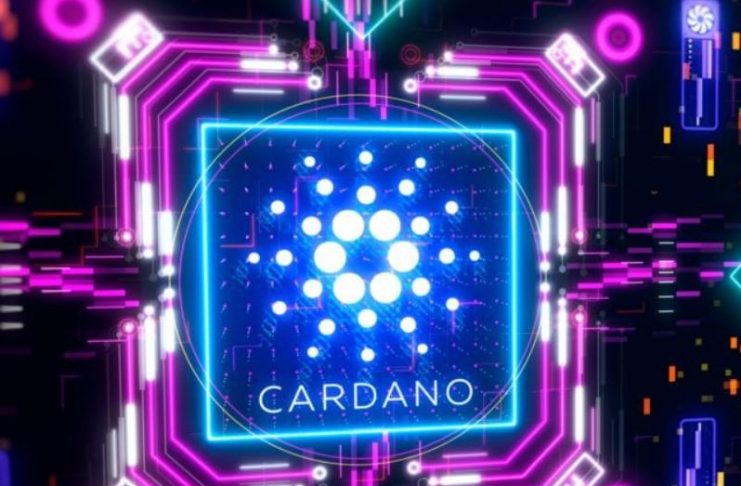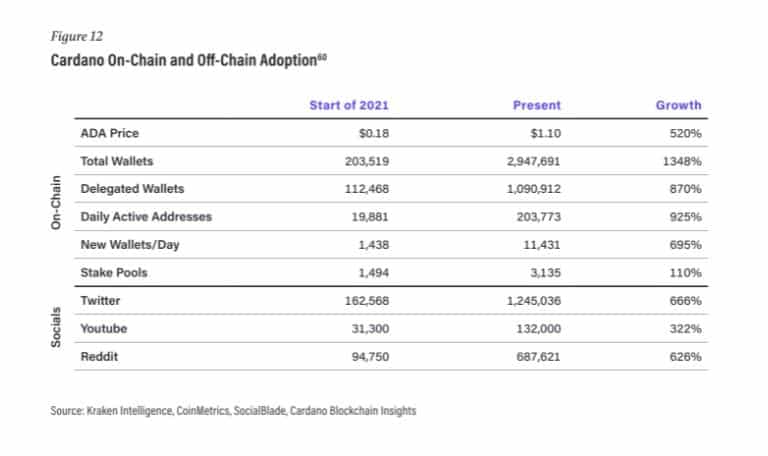Cardano (ADA), the sixth-largest cryptocurrency by market capitalization, has been in the limelight in recent times.
The Cardano team, led by its founder Charles Hoskinson, has committed a lot of work to lure several users into adopting it as their favorite choice in an industry where competition is stiff.
It is worth noting that Cardano did not have as easy a journey as many would think. Like several cryptocurrency projects, Cardano endured some tough years, incredibly a few months after its launch.
Interestingly, the popular blockchain project survived crypto storms in 2018 and 2019 and is set to rival established networks like Ethereum.
In a recent report, popular cryptocurrency exchange Kraken explained how Cardano’s team could change the project’s fate from what could have ended prematurely into a top ten cryptocurrency contender.
Cardano’s History
Cardano is a third-generation, open-source, decentralized cryptocurrency project that began development in 2015.
The cryptocurrency was subsequently launched in 2017 by Jeremy Wood Hoskinson during the ICO craze. Its native cryptocurrency, ADA, enjoyed significant growth at the time, but like other cryptocurrencies, its value dropped significantly the following year.
Cardano, which uses a proof-of-stakes (PoS) consensus algorithm built on the Ouroboros protocol, is often branded as Ethereum Killer because of its focus on also enabling developers to launch smart contracts on its platform.
However, over a year after the Cardano project was launched, developers could still deploy smart contracts on the network.
Enthusiasts were angered by the development. Certain supporters called out the project’s founder on Twitter in July for failing to deliver on the thousands of decentralized applications (dApp) it promised ADA holders.
The delays in launching smart contract functionality prompted several of Cardano’s early supporters to migrate to related networks like Ethereum.
Cardano Gather Momentum
With the announcement of the Shelley upgrade in mid-2020, Cardano moved from 50 to 100 times more decentralized than most of its rivals.
The upgrade brought excitement to Cardano enthusiasts. The effect was seen on ADA, as the token soared over 150% in the second quarter of 2020, ever since its previous highest price level in 2019.
Other upgrades and widespread cryptocurrency adoption in late 2020 and throughout 2021 also helped the network experience more growth.
Cardano Ecosystem Grows Since 2021
In September 2021, Cardano completed the Alonzo hard fork, an upgrade that ushered in smart contract functionality.
According to the report, Cardano has experienced massive growth in all sectors of the projects, including in its coin’s price, the number of daily active addresses, total wallets, etc., since the support of smart contracts functionality.
Kraken noted that the ADA price is up over 450% from the $0.18 recorded at the beginning of 2021.
Similarly, the number of unique ADA addresses has soared over 1348%, from 203,519 to nearly three million in the same period. Daily active addresses hit 203,773 from 19,881 in the same period.
While things may seem to have cooled down a bit for ADA, the coin is still considered the best buy in 2022 due to other upgrades and developments that are tipped to be unveiled in the coming months.
Cardano Technology
- Ouroboros is the blockchain protocol implemented on the Cardano blockchain, which uses Nakamoto style consensus similar to bitcoin. Still, unlike BTC PoW, Ouroboros implements the PoS model, which uses the network token.
- Staking And Stake Distribution: On Cardano, Validators earn rewards in the form of ADA for running nodes that operate and secure the network. Cardano offers stake delegation to invite more participants where stakeholders can delegate their ada to another validator if they don’t have the technical knowledge to run a node. ON Cardano, there is 23.9B staked across more than 3100 stake pools supported by over 1 million delegating wallets.
- Extended UTXO Model: One feature of Cardano that makes it highly unique from other smart contracts is its Extended UTXO model. Cardano Extended UTXO model is a mixture of Unspent transaction output (UTXO) made popular by Bitcoin and an Account-based model made famous by the Ethereum network. Cardano implements features of both models in its extended UTXO model.
- Cardano is built using Haskell programming language; this language differs vastly from popular object-oriented programming languages like Java C++.
- Layers And Sidechains: Cardano adopts this modular approach as its core by separating transactional settlement and computation into separate layers. In this sense, the base layer is reserved strictly for keeping a record of the transfer of the native token and validating smart contracts.
Cardano Web 3.0
Cardano based nonfungible tokens (CNFTS) have been live on Cardano since the Mary hard fork in march 2021; CNFTs are similar to NFTs on Ethereum, but they differ in that CNFTs are native tokens while Ethereum NFTs are embedded in smart contracts in this way, CNFTs operate more efficiently than ETH NFTs.
Partnerships
Cardano got two major partnerships with the Governments of Ethiopia and Zanzibar. In commercial partnership, some significant achievements were collaborations with Wolfram, Scantrust, Acuant, and Dish Network.
Cardano Network Growth
Below image explains Cardano on-chain and off-chain adoption
Conclusion
OVerall Cardano, with roots as early as 2015, has persisted through treacherous markets and developments hiccups to ultimately position itself as a major contender in a competitive space of L1 smart contracts protocols. Kraken Predicts much more excitement for Cardano looking forward as IOG strives to improve the scaling and performance of the network. Hydra is expected to be partially implemented and usable to enable microtransactions, and the beta main net release of Miklomeda is scheduled to go live, providing Cardano with EVM capabilities.
DisClamier: This content is informational and should not be considered financial advice. The views expressed in this article may include the author's personal opinions and do not reflect The Crypto Basic opinion. Readers are encouraged to do thorough research before making any investment decisions. The Crypto Basic is not responsible for any financial losses.



